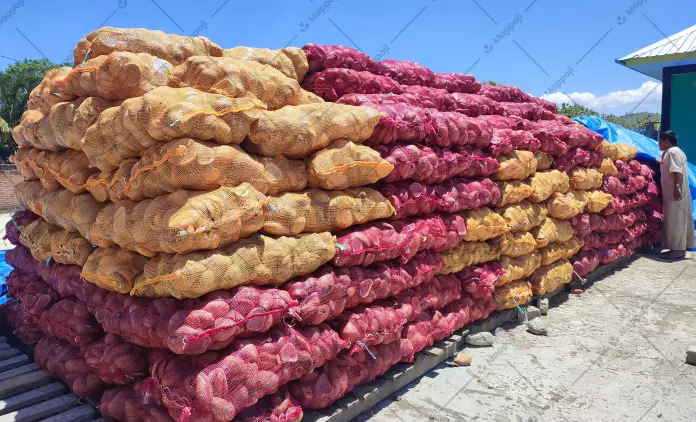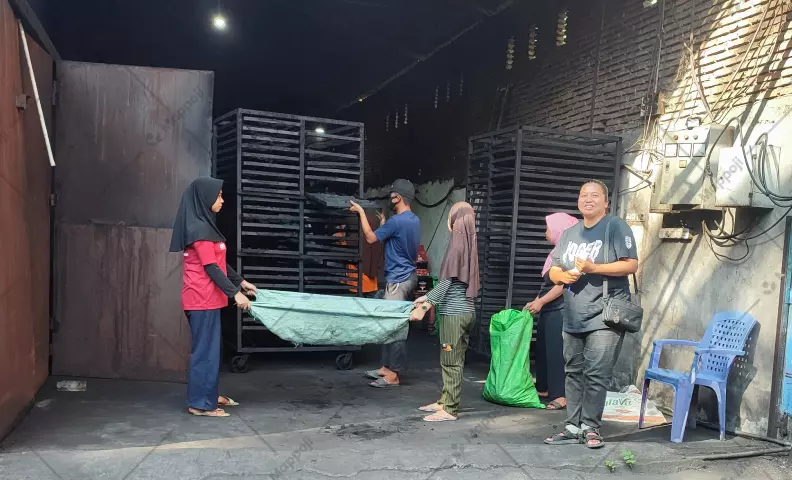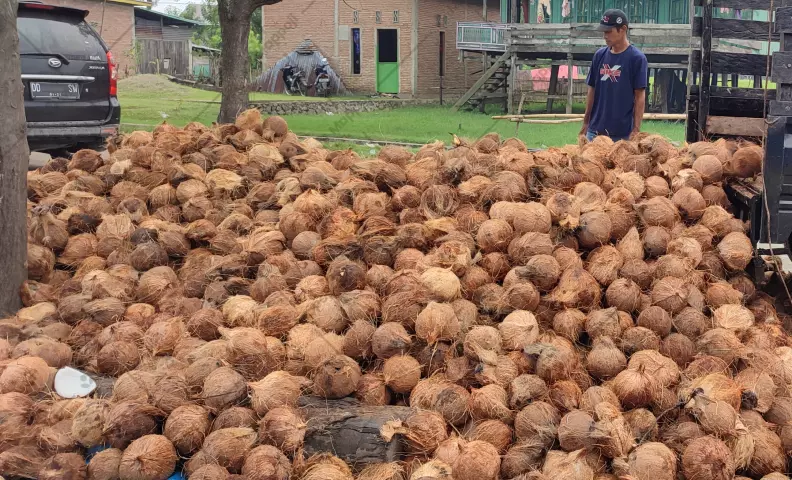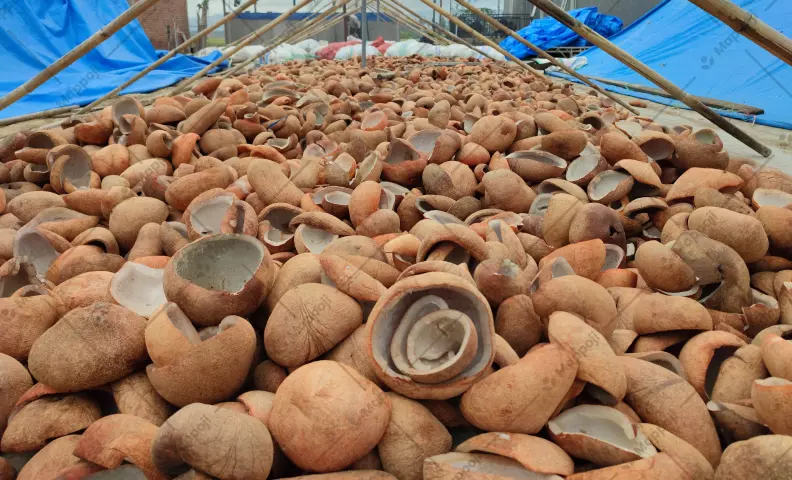Aug 5, 2022 | Product
Preparing the Package for Copra: Ensuring Quality and Efficiency

Achmad Alimin

The farmer does quality control before the Copra is loaded onto the truck.
Image Credit: Mappoji
Mappoji - As Copra continues to be a valuable commodity in various industries, proper
packaging plays a crucial role in preserving its quality and ensuring efficient handling during
transportation and storage. The packaging process for Copra involves several important
considerations, including protection from moisture, maintaining freshness, optimizing storage space,
and complying with industry standards. In this article, we will explore the key steps involved in
preparing the package for Copra to meet these requirements and ensure that it reaches its
destination in optimal condition.
Selection of Packaging Materials
Choosing the right packaging materials is essential to safeguard Copra from external factors that may
compromise its quality. The primary packaging material used for Copra is often jute bags, which
provide excellent breathability, allowing air circulation to prevent moisture buildup and reduce the
risk of mold or fungal growth. Jute bags are also durable, cost-effective, and eco-friendly, making
them a preferred choice for Copra packaging.
In addition to jute bags, other packaging materials such as woven polypropylene (PP) bags or
high-density polyethylene (HDPE) bags may be used depending on specific requirements and market
preferences. These materials offer good strength, moisture resistance, and protection against
external contaminants.
Cleaning and Drying
Before packaging, it is crucial to ensure that the Copra is clean and impurities-free. Cleaning
involves removing any foreign matter, such as dirt, debris, or broken shells, which could affect the
quality and hygiene of the Copra. This step is usually performed by hand or through mechanical
cleaning processes.
After cleaning, the Copra must be properly dried to reduce its moisture content. Excessive moisture
can lead to spoilage and affect the Copra's shelf life. Drying can be achieved through natural sun
drying, where the Copra is spread in thin layers and exposed to sunlight, or by using mechanical
dryers that control temperature and airflow for efficient drying. Adequate drying ensures that the
Copra retains its desired moisture level and remains stable during storage and transportation.
Weighing and Segregation
Once cleaned and dried, the Copra is weighed to ensure accurate measurement and facilitate inventory
management. Weighing is typically done using weighing scales or automated systems to determine the
exact quantity of Copra in each package. This information is crucial for inventory control, pricing,
and tracking purposes.
Segregation may also be necessary during the packaging process. Copra may be segregated based on
factors such as grade, quality, or customer specifications. This allows for better organization and
helps meet specific market demands or quality requirements.
Packaging and Sealing
After weighing and segregation, the Copra is carefully filled into the selected packaging material,
be it jute bags, woven PP bags, or HDPE bags. Proper filling techniques ensure that the Copra is
evenly distributed within the bag, preventing excessive compression or air gaps that could affect
the package's integrity.
Once filled, the bags are sealed to secure the Copra inside. Sewing machines are commonly used to
stitch the mouth of jute bags, providing tight closure. Woven PP bags or HDPE bags, on the other
hand, maybe sealed using heat sealing techniques or by using adhesive tapes. The sealing process
ensures the Copra remains protected and prevents any spillage or contamination during handling and
transportation.
Labeling and Documentation
Labeling the packages is a critical step in the packaging process. Each package should be clearly
labeled with essential information such as the product name, grade, weight, batch or lot number, and
the producer's or exporter's details. Proper labeling ensures easy identification, traceability, and
compliance with regulatory requirements. It also provides important information to buyers,
distributors, and end-users.
Documentation is equally important, especially for international shipments. Documents such as packing
lists, commercial invoices,
We look forward to hearing from you and to the possibility of working together. Please don't hesitate
to contact us. Our team is always happy to help and can provide you with
the information you need to make an informed decision.




